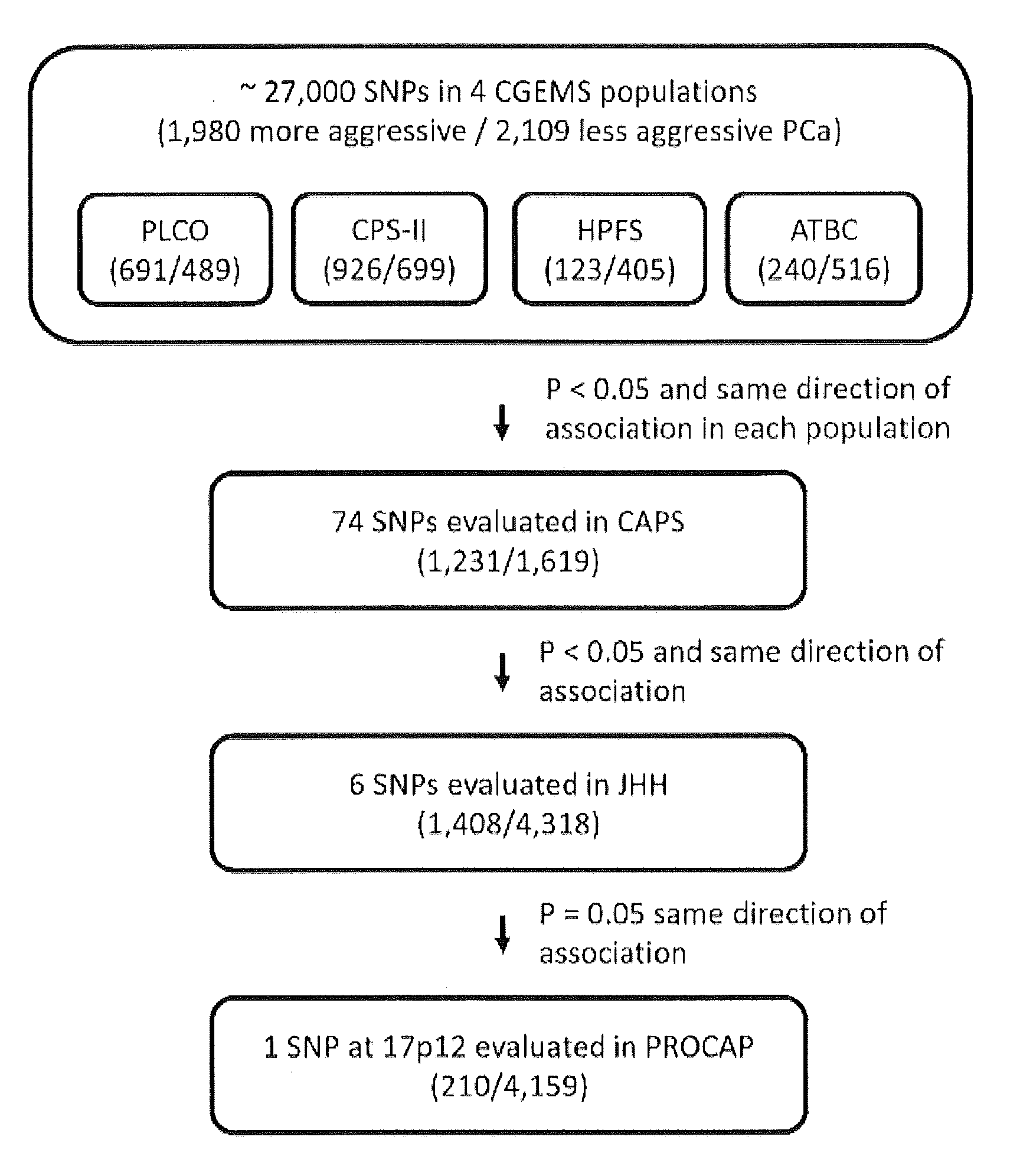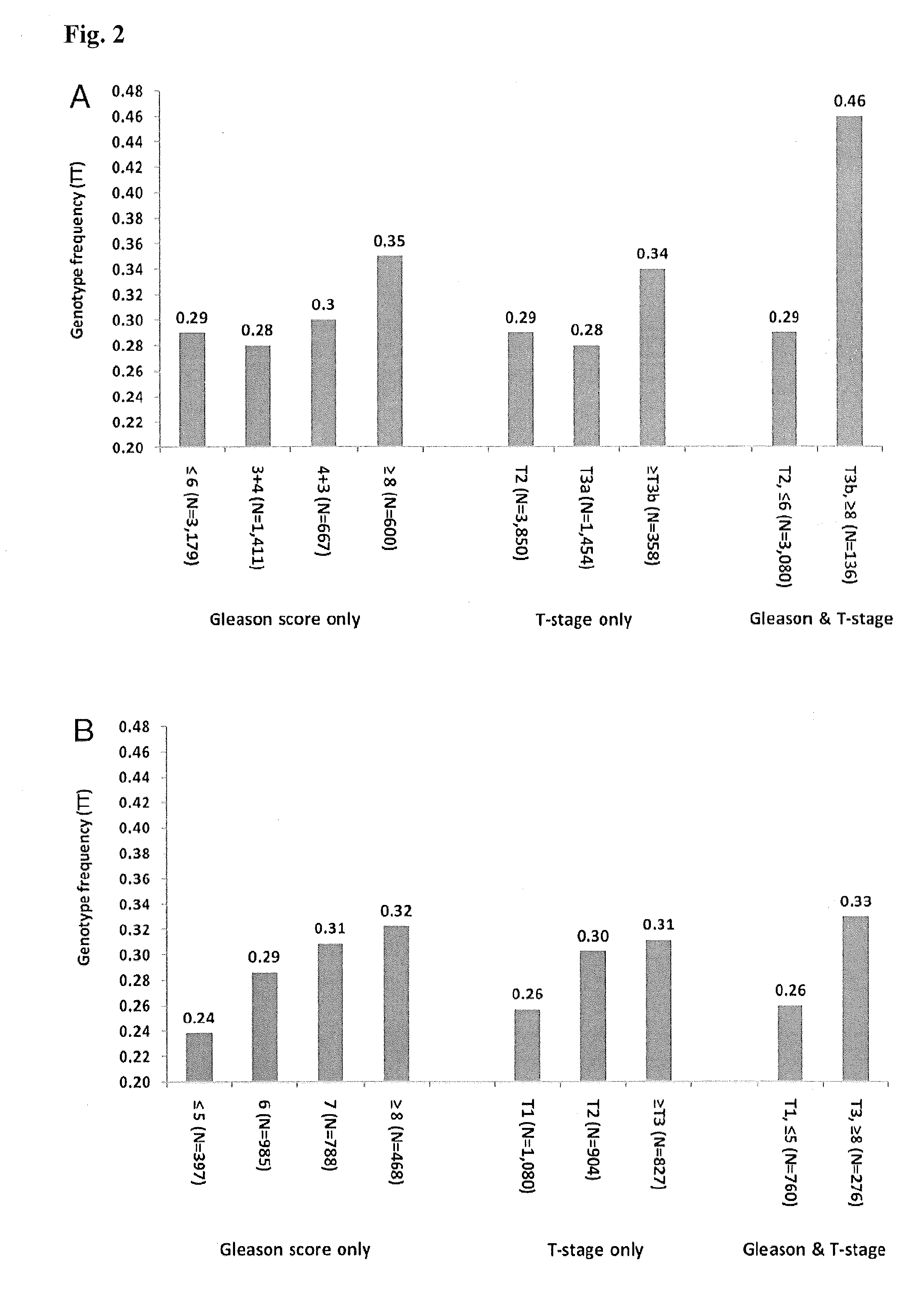Methods and compositions for correlating genetic markers with risk of aggressive prostate cancer
- Summary
- Abstract
- Description
- Claims
- Application Information
AI Technical Summary
Benefits of technology
Problems solved by technology
Method used
Image
Examples
examples
[0058]Abstract. Autopsy studies suggest that most aging men will develop lesions that, if detected clinically, would be diagnosed as prostate cancer (PCa). Most of these cancers are indolent and remain localized; however, a subset of PCa is aggressive and accounts for more than 27,000 deaths in the United States annually. Identification of factors specifically associated with risk for more aggressive PCa is urgently needed to reduce overdiagnosis and overtreatment of this common disease. To search for such factors, the frequencies of SNPs were compared among PCa patients who were defined as having either more aggressive or less aggressive disease in four populations examined in the Genetic Markers of Susceptibility (CGEMS) study performed by the National Cancer Institute. SNPs showing possible associations with disease severity were further evaluated in an additional three independent study populations from the United States and Sweden. In total, 4,829 and 12,205 patients with more ...
PUM
| Property | Measurement | Unit |
|---|---|---|
| Level | aaaaa | aaaaa |
| Linkage disequilibrium | aaaaa | aaaaa |
Abstract
Description
Claims
Application Information
 Login to View More
Login to View More - R&D
- Intellectual Property
- Life Sciences
- Materials
- Tech Scout
- Unparalleled Data Quality
- Higher Quality Content
- 60% Fewer Hallucinations
Browse by: Latest US Patents, China's latest patents, Technical Efficacy Thesaurus, Application Domain, Technology Topic, Popular Technical Reports.
© 2025 PatSnap. All rights reserved.Legal|Privacy policy|Modern Slavery Act Transparency Statement|Sitemap|About US| Contact US: help@patsnap.com



